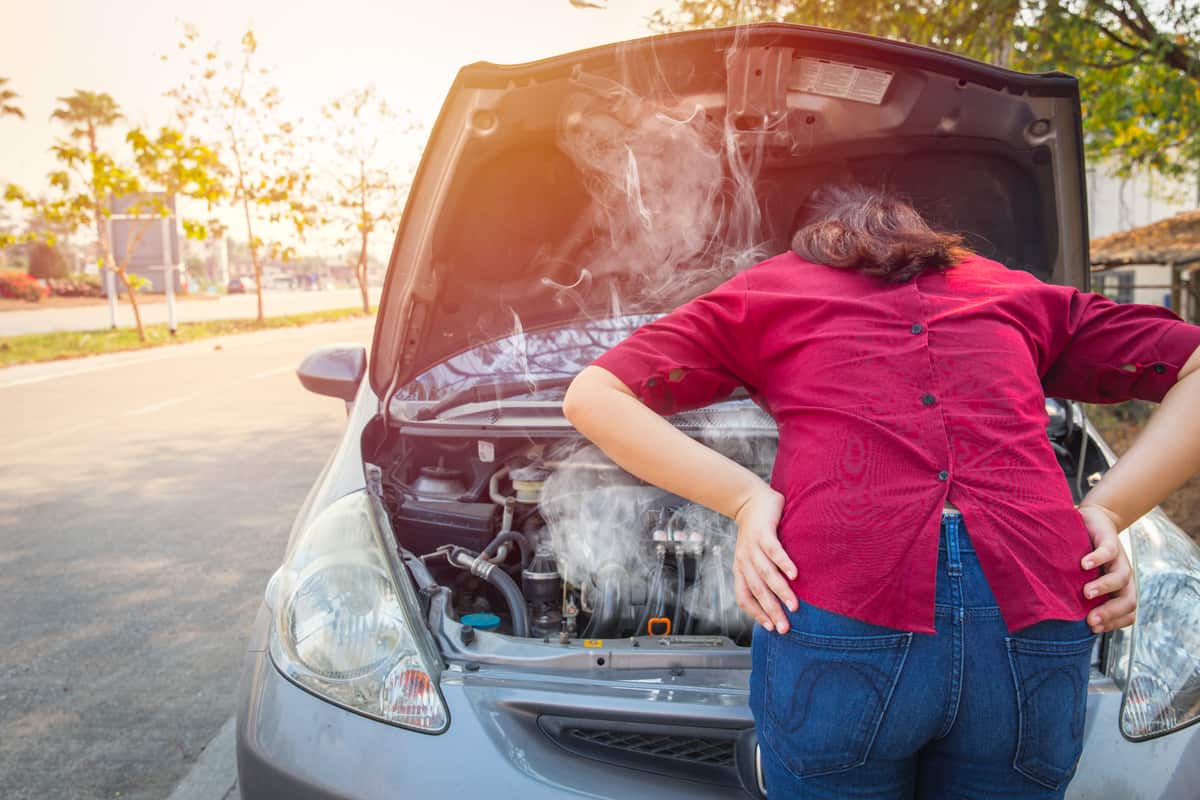

Articles
Car Overheats When AC Is On And Idle
Modified: November 2, 2024
Having trouble with your car overheating when the AC is on and idle? Check out our informative articles for tips and solutions to keep your vehicle cool and running smoothly.
(Many of the links in this article redirect to a specific reviewed product. Your purchase of these products through affiliate links helps to generate commission for Storables.com, at no extra cost. Learn more)
Introduction
Driving in a car with a well-functioning air conditioning (AC) system can be a lifesaver, especially during hot summer days. However, it can be a major inconvenience if your car starts to overheat when the AC is on and the engine is idle. This can not only make your car uncomfortable to drive, but it can also potentially cause damage to the engine if left unaddressed.
Understanding why a car overheats when the AC is on and the engine is idle is crucial for every car owner. In this article, we will explore the common causes of car overheating, discuss how the AC system works, and delve into the relationship between the AC system and engine temperature. We will also provide some steps you can take to prevent your car from overheating when the AC is on and the engine is idle.
So, let’s dive into the details and gain a better understanding of why this temperature issue occurs and how to solve it.
Key Takeaways:
- Regular maintenance, such as checking coolant levels, cleaning the radiator, and verifying the proper functioning of cooling system components, is crucial to prevent car overheating when the AC is on and the engine is idle.
- Avoid extended idle time with the AC on, and keep an eye on the engine temperature gauge. Taking proactive measures and addressing issues promptly can help maintain a comfortable driving experience.
Common Causes of Car Overheating
There are several reasons why a car may overheat, especially when the AC is on and the engine is idle. Understanding these common causes can help you identify and address the issue promptly. Here are some common culprits:
1. Lack of Coolant: One of the most common causes of car overheating is a low coolant level. Coolant, also known as antifreeze, helps regulate the engine’s temperature by absorbing heat and maintaining a constant temperature. If the coolant level is low, there may not be enough fluid to adequately cool the engine, resulting in overheating.
2. Coolant Leaks: Coolant leaks can lead to a decrease in the coolant level and cause overheating. These leaks can occur due to a damaged radiator, a faulty hose, or a malfunctioning water pump. It’s important to regularly inspect your car for any signs of coolant leaks, such as puddles or a sweet-smelling odor.
3. Malfunctioning Thermostat: The thermostat is responsible for regulating the flow of coolant through the engine. If the thermostat is stuck closed, it can prevent the coolant from circulating properly, leading to overheating. On the other hand, if the thermostat is stuck open, the engine may not reach the optimal operating temperature, causing poor fuel efficiency.
4. Faulty Radiator Fan: The radiator fan plays a crucial role in cooling the engine by pulling air through the radiator. If the fan is not functioning properly, it may not provide enough airflow, resulting in overheating. Common issues include a faulty fan motor, a damaged fan blade, or a malfunctioning fan relay.
5. Clogged Radiator: Over time, the radiator can accumulate dirt, debris, and mineral deposits, resulting in reduced heat dissipation. This can lead to overheating, especially when the AC is on and the engine is idle. Regular maintenance, such as flushing the radiator and cleaning the fins, can help prevent this issue.
6. Serpentine Belt Issues: The serpentine belt drives various components of the engine, including the water pump and the AC compressor. If the belt is worn, damaged, or loose, it may not effectively drive these components, leading to overheating when the AC is on.
7. Electrical Problems: Electrical issues, such as a malfunctioning temperature sensor or a faulty wiring connection, can disrupt the proper functioning of the cooling system. This can result in fluctuating engine temperature and potential overheating.
These are just a few common causes of car overheating when the AC is on and the engine is idle. It’s important to address these issues promptly to avoid further damage to your vehicle. Regular maintenance, such as checking coolant levels, inspecting for leaks, and ensuring the proper functioning of cooling system components, can help prevent overheating. In the next section, we will explore how the AC system works to better understand its relationship with engine temperature.
Understanding How the AC System Works
To understand why a car overheats when the AC is on and the engine is idle, it’s important to have a basic understanding of how the AC system operates. The AC system is designed to cool the air inside the vehicle and maintain a comfortable driving environment. It works through a series of components that interact to produce cool air. Here’s a breakdown of the major components:
1. Compressor: The compressor plays a vital role in the AC system. It is driven by the engine’s serpentine belt and is responsible for compressing the refrigerant gas, which increases its temperature and pressure.
2. Condenser: The condenser is located in front of the vehicle and functions as a heat exchanger. It helps dissipate the heat generated by the compressed refrigerant gas, converting it into a cool liquid.
3. Expansion Valve: The expansion valve is responsible for regulating the flow of the refrigerant into the evaporator. It reduces the pressure of the refrigerant, causing it to expand, which in turn causes a drop in temperature.
4. Evaporator: The evaporator is located inside the car’s dashboard and is responsible for absorbing heat from the air inside the vehicle. As the refrigerant evaporates, it absorbs heat energy, resulting in a cool air stream.
5. Blower Motor: The blower motor is connected to the evaporator and is responsible for blowing air over the evaporator’s fins. This creates airflow and allows the cool air to circulate throughout the vehicle’s cabin.
In summary, the AC system operates by compressing and expanding refrigerant gas, which facilitates the transfer of heat energy and ultimately provides cool air to the vehicle’s interior. However, the process of cooling the air generates heat that needs to be dissipated, which puts an additional load on the engine and cooling system.
Now that we have a basic understanding of how the AC system functions, let’s explore the relationship between the AC system and engine temperature, and why a car tends to overheat when the AC is on and the engine is idle.
The Relationship Between AC and Engine Temperature
When the AC system is turned on, it places an added load on the engine and cooling system, which can affect the engine’s temperature. The AC system uses energy from the engine to operate, which increases the workload on the engine and can lead to increased heat generation. This heat needs to be efficiently managed to prevent the engine from overheating.
The cooling system of a car is responsible for regulating the engine’s temperature and preventing overheating. It consists of several components, including the radiator, cooling fan, water pump, and thermostat. The radiator cools the engine coolant by dissipating the heat into the surrounding air, while the cooling fan helps to improve airflow through the radiator. The water pump circulates the coolant, ensuring that it reaches all parts of the engine to absorb and dissipate heat.
When the AC is turned on, it requires more power from the engine to operate the compressor and cool the air. This increased power demand means the engine has to work harder, generating more heat as a result. Additionally, the AC system utilizes the engine’s radiator and cooling fan to dissipate the heat generated during the cooling process.
At idle or low engine speeds, the cooling system’s ability to dissipate heat effectively may be reduced. The lower engine speed means less airflow through the radiator, and the cooling fan may not be operating at optimal speed. This combination of factors can lead to a buildup of heat in the engine, causing it to overheat.
Furthermore, if there are any issues with the cooling system, such as low coolant levels, a malfunctioning thermostat, or a faulty radiator fan, the engine’s ability to dissipate heat efficiently may be compromised. This increases the likelihood of overheating when the AC is on and the engine is idle.
It’s important to note that modern car engines are designed to handle the additional load of the AC system. However, certain factors such as hot weather conditions, the condition of the cooling system components, and extended periods of idling can exacerbate the risk of overheating.
In the next section, we will discuss some steps you can take to prevent your car from overheating when the AC is on and the engine is idle.
Check the radiator and cooling fan for any issues. Low coolant levels, a faulty fan, or a clogged radiator can cause overheating when the AC is on at idle.
Why a Car Overheats When the AC Is On and the Engine Is Idle
When a car overheats while the AC is on and the engine is idle, it is often a result of the combination of increased heat generation from the AC system and reduced airflow through the radiator. Here’s a closer look at why this happens:
1. Increased Heat Generation: When you turn on the AC, the compressor engages and starts compressing the refrigerant gas. This process generates heat that needs to be dissipated. While driving, the car’s movement helps to direct airflow through the radiator, aiding in heat dissipation. However, when the engine is idle, there is limited airflow, making it challenging for the radiator and cooling fan to effectively cool down the engine.
2. Reduced Airflow: At idle or low engine speeds, the cooling fan operates at a lower speed compared to when the car is in motion. This means less airflow is passing through the radiator, limiting its ability to cool down the engine. Additionally, if there are any obstructions in the radiator, such as debris or blockages, it further hampers the airflow, contributing to overheating.
3. Inefficient Cooling System: If there are any underlying issues with the cooling system, such as a malfunctioning thermostat, a faulty radiator fan, or low coolant levels, the cooling system’s efficiency is compromised. These issues can prevent the proper flow of coolant or hinder heat dissipation, causing the engine to overheat more easily, especially when the AC is on and the engine is idle.
4. Hot Weather Conditions: Hot outside temperatures can also play a role in exacerbating the overheating issue. When it’s already hot outside, and the engine is idle, the combination of the AC system’s heat generation and limited airflow can quickly raise the engine temperature to dangerous levels.
It’s important to address the underlying causes of why your car overheats when the AC is on and the engine is idle. Regular maintenance, including checking and maintaining proper coolant levels, ensuring the radiator is clean and free of obstructions, and verifying that the cooling system components are functioning correctly, can help prevent overheating.
In the next section, we will discuss some steps you can take to prevent your car from overheating when the AC is on and the engine is idle.
Steps to Prevent Car Overheating When the AC Is On and the Engine Is Idle
To prevent your car from overheating when the AC is on and the engine is idle, there are several steps you can take. Following these preventive measures will help ensure the optimal functioning of your car’s cooling system and reduce the risk of overheating. Here are some tips to keep in mind:
1. Check Coolant Levels Regularly: Maintaining proper coolant levels is crucial for the cooling system to effectively regulate the engine’s temperature. Check the coolant level in the reservoir regularly and top it up if needed. Make sure to refer to your car’s manual for the correct coolant type and mixing ratio.
2. Inspect for Coolant Leaks: Periodically inspect your car for any signs of coolant leaks. Look for puddles under the vehicle or the presence of a sweet-smelling odor, which can indicate a coolant leak. If you notice any leaks, have them repaired promptly to prevent a decrease in coolant levels and potential overheating.
3. Clean the Radiator: The radiator plays a crucial role in dissipating heat from the engine. Over time, it can accumulate dirt, debris, and mineral deposits, obstructing airflow. Regularly clean the radiator fins using a soft brush or compressed air to ensure proper heat dissipation.
4. Test the Thermostat: A malfunctioning thermostat can disrupt the flow of coolant and impact the cooling system’s efficiency. Test your car’s thermostat or have it checked by a professional to ensure it is functioning correctly. Replace it if necessary.
5. Verify the Radiator Fan Operation: The radiator fan assists in cooling the engine by drawing air through the radiator. Confirm that the fan operates as intended by checking if it turns on when the engine reaches operating temperature. If the fan is not functioning, have it repaired or replaced.
6. Maintain a Healthy Serpentine Belt: A worn or damaged serpentine belt can affect the operation of various engine components, including the water pump and AC compressor. Regularly inspect the belt for any signs of wear or damage and replace it if necessary to ensure proper function.
7. Avoid Extended Idle Time: If possible, avoid extended periods of idling with the AC on. If you’re in a situation where you need to idle the car, consider turning off the AC periodically or revving the engine slightly to increase airflow. Even a small increase in engine speed can help improve heat dissipation.
8. Keep an Eye on the Engine Temperature Gauge: Pay attention to the engine temperature gauge on your dashboard while driving. If you notice the temperature rising above the normal range, especially when the AC is on and the engine is idle, take immediate action. Safely pull over, turn off the engine, and allow it to cool before proceeding.
By following these steps, you can minimize the risk of your car overheating when the AC is on and the engine is idle. Regular maintenance and ensuring the proper functioning of the cooling system components will help keep your engine running at the optimal temperature and prolong the life of your vehicle.
Conclusion
Experiencing car overheating when the AC is on and the engine is idle can be a frustrating and concerning situation. However, by understanding the common causes, the functioning of the AC system, and the relationship between the AC system and engine temperature, you can take proactive measures to prevent overheating.
Regular maintenance, such as checking coolant levels, inspecting for coolant leaks, cleaning the radiator, and ensuring the proper operation of cooling system components, is crucial. These steps help to maintain the efficiency of the cooling system and ensure the optimal temperature regulation of the engine.
It’s important to address any issues promptly to prevent further damage to your car’s engine and cooling system. In cases where you notice the engine temperature rising above the normal range, it’s advisable to take immediate action. Safely pull over, turn off the engine, and allow it to cool before proceeding.
Remember, prevention is key. By following the preventive measures outlined in this article, you can mitigate the risk of car overheating when the AC is on and the engine is idle. Regular maintenance and proactive steps will not only help keep your engine in good working condition but also contribute to a more comfortable and enjoyable driving experience.
So, be diligent in checking your coolant levels, inspecting for leaks, keeping the radiator clean, and ensuring the proper functioning of the cooling system components. By doing so, you can avoid the frustration and inconvenience of a car overheating when you need that soothing cool breeze from your AC the most.
Stay proactive, stay cool, and enjoy your journey!
Frequently Asked Questions about Car Overheats When AC Is On And Idle
Was this page helpful?
At Storables.com, we guarantee accurate and reliable information. Our content, validated by Expert Board Contributors, is crafted following stringent Editorial Policies. We're committed to providing you with well-researched, expert-backed insights for all your informational needs.

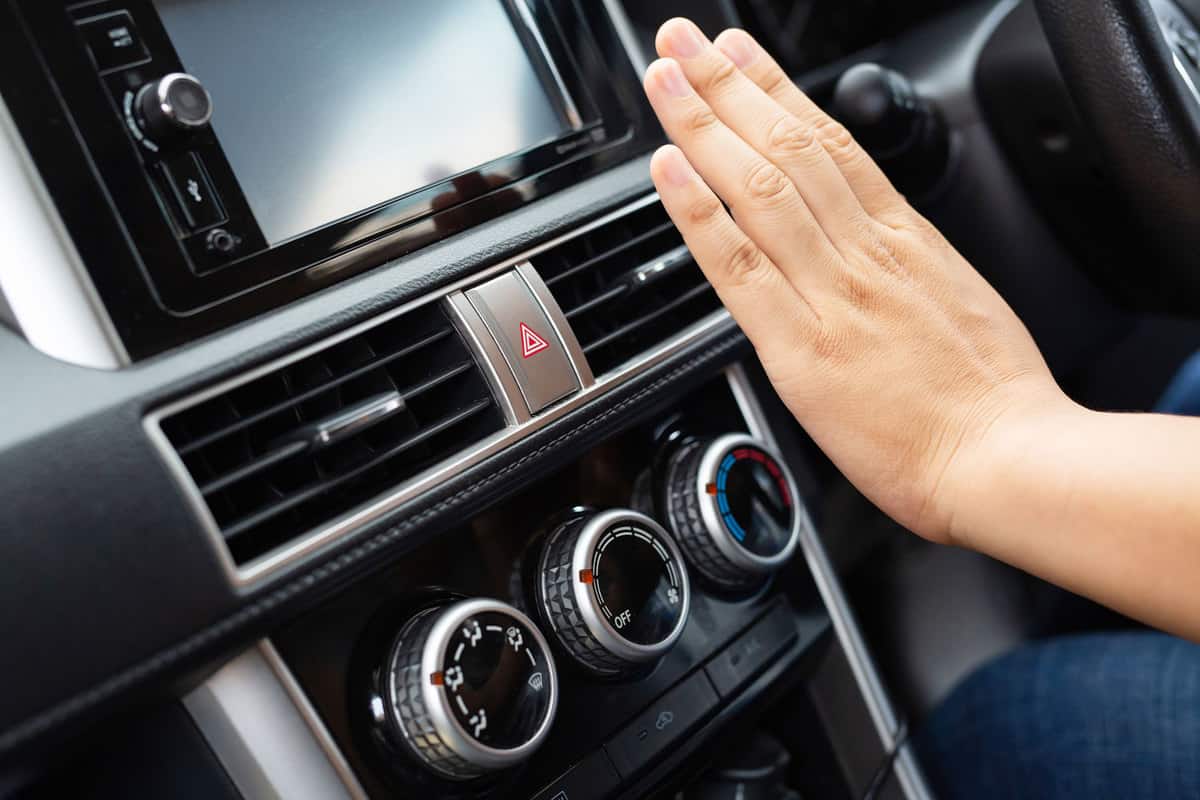

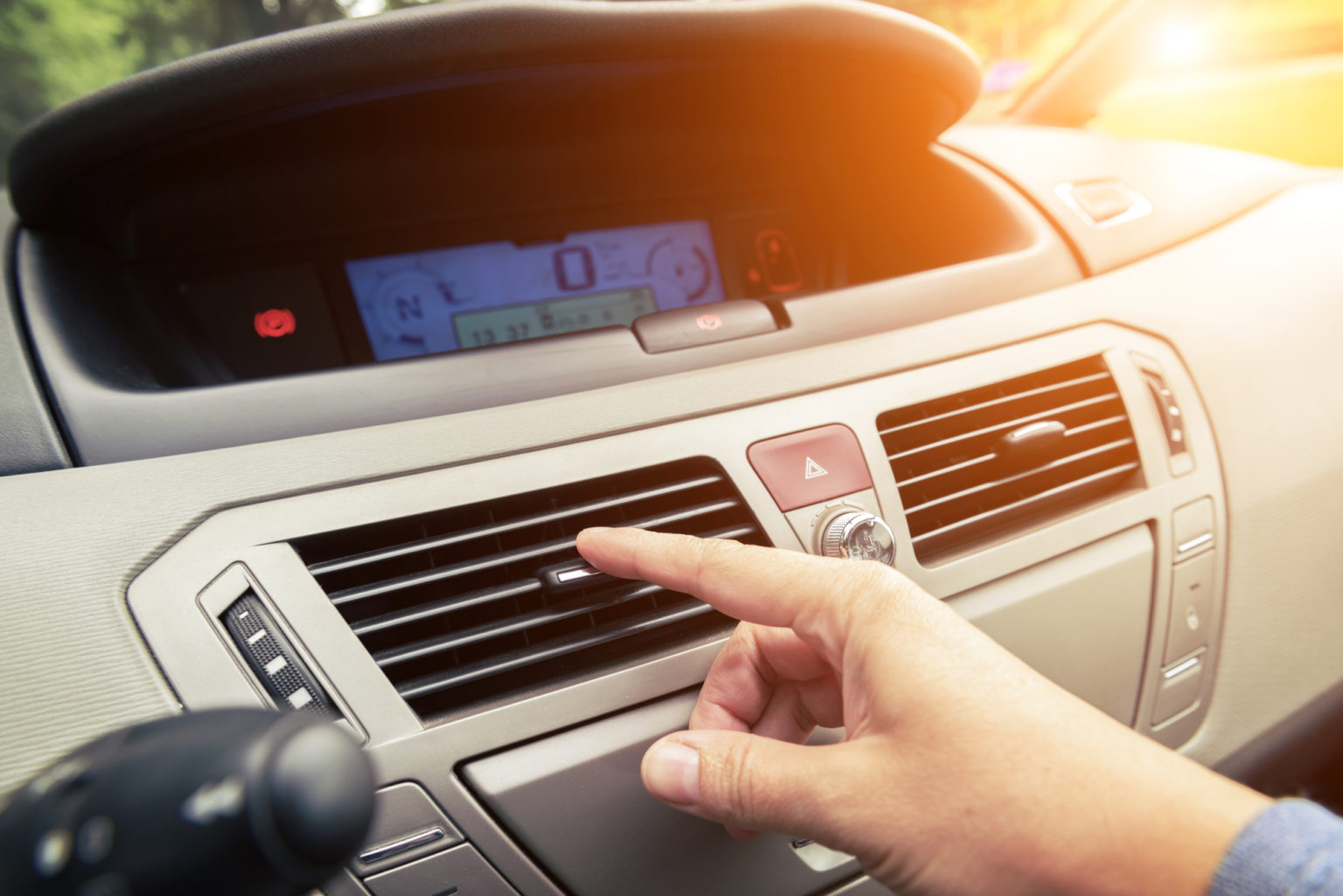
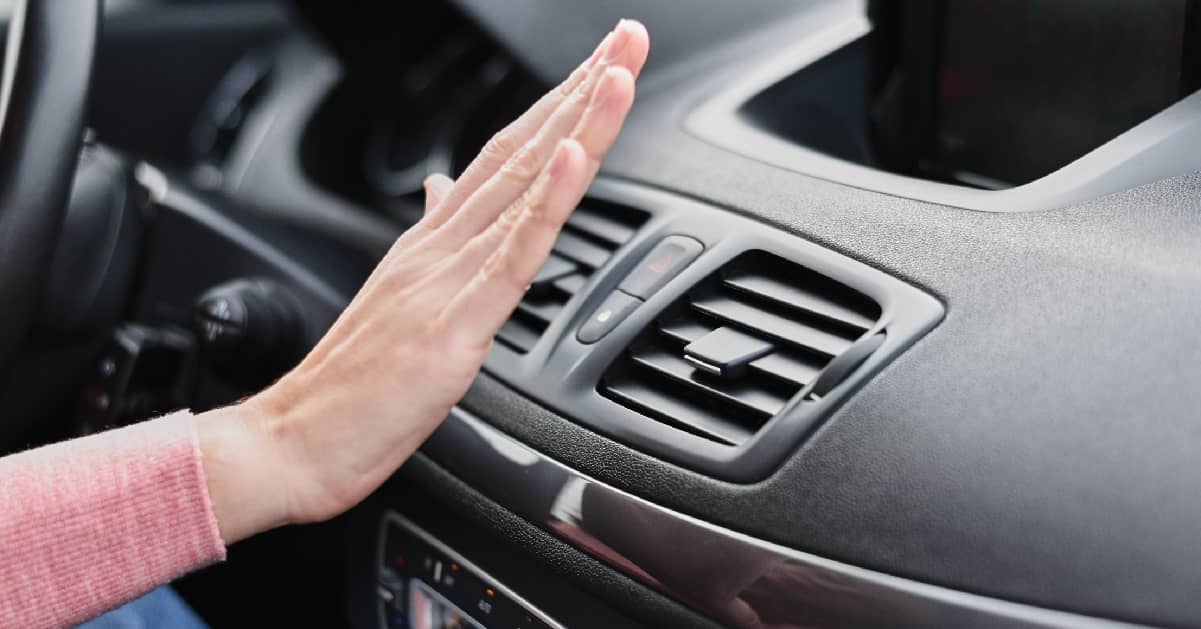

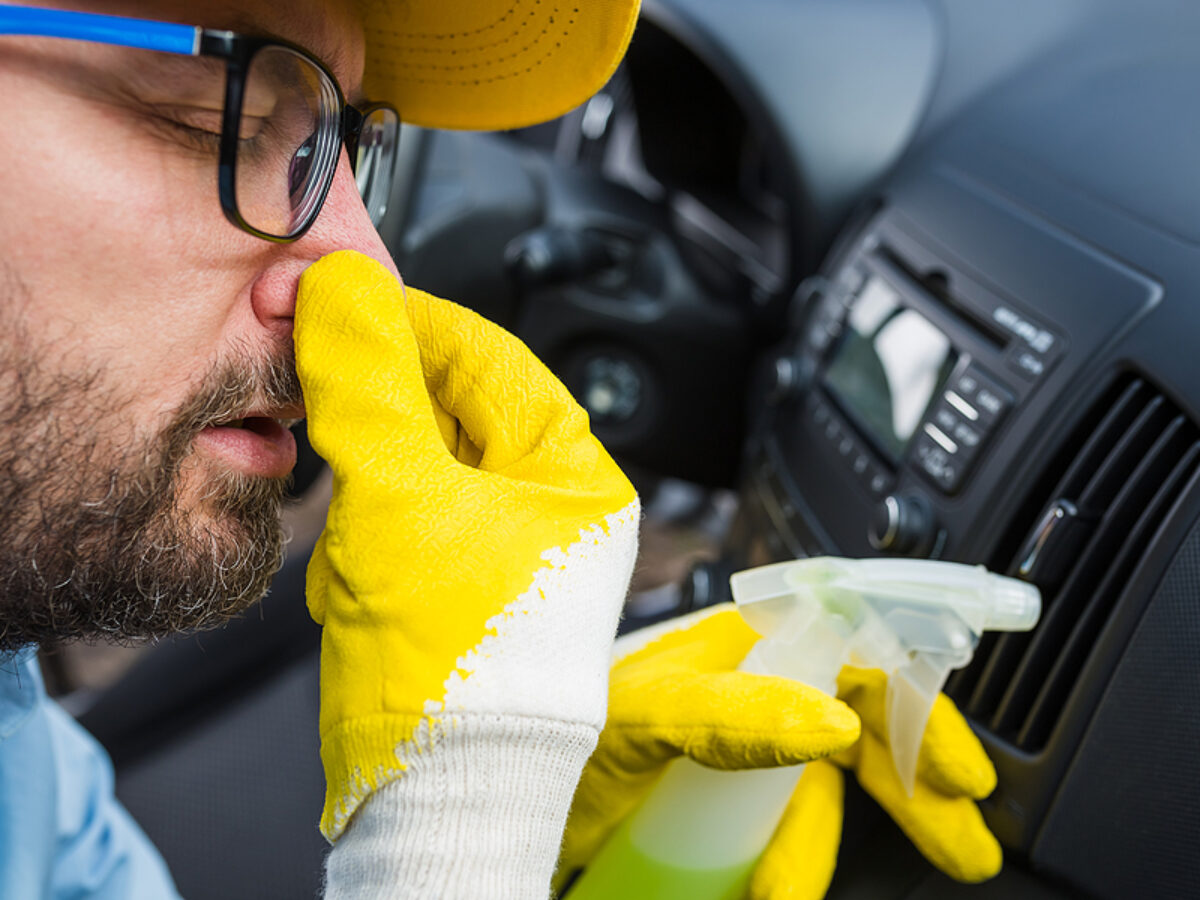


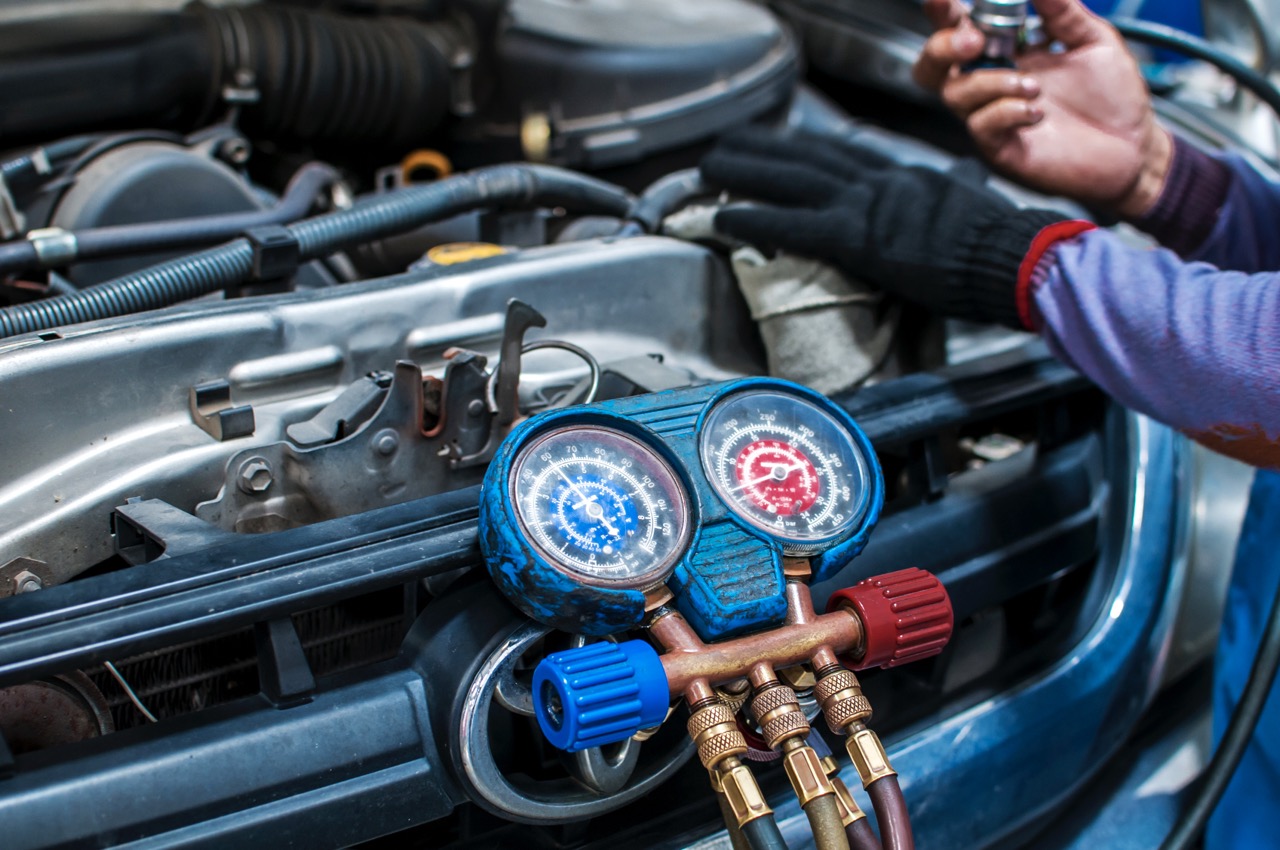
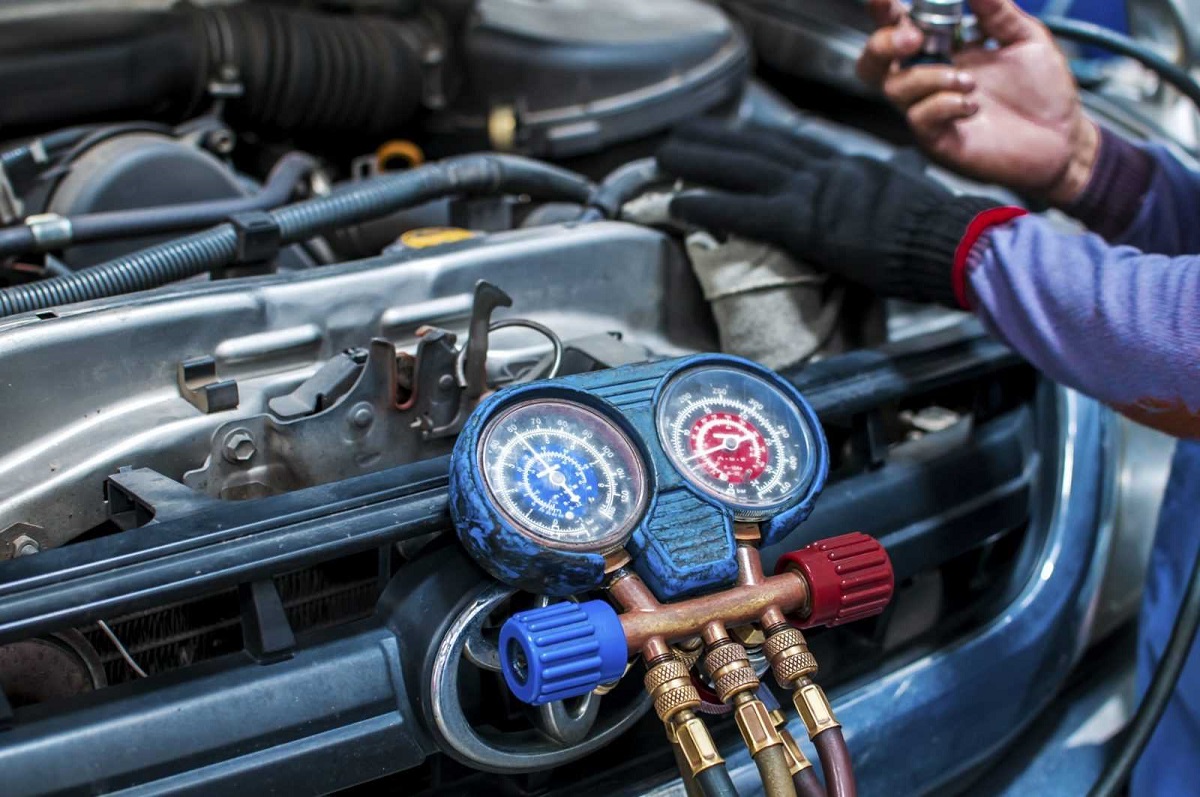
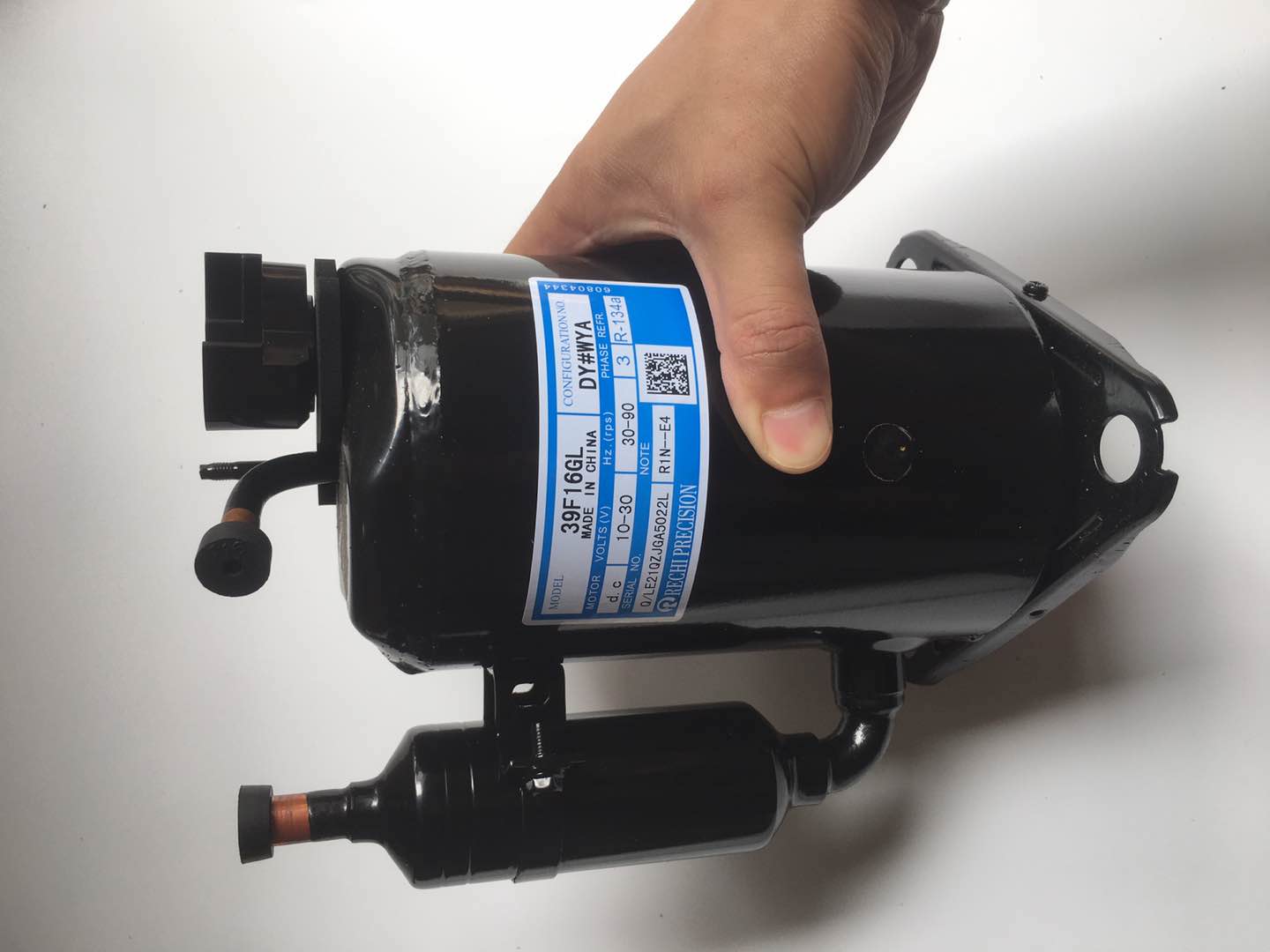
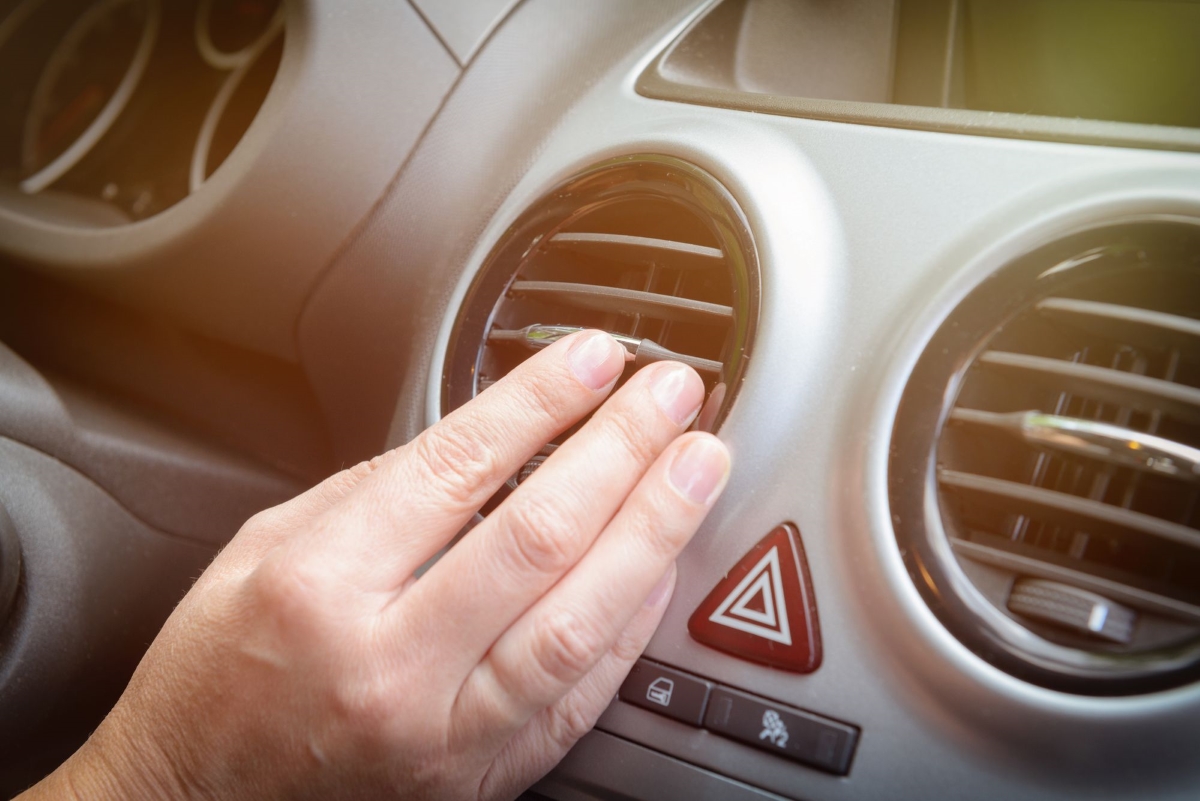
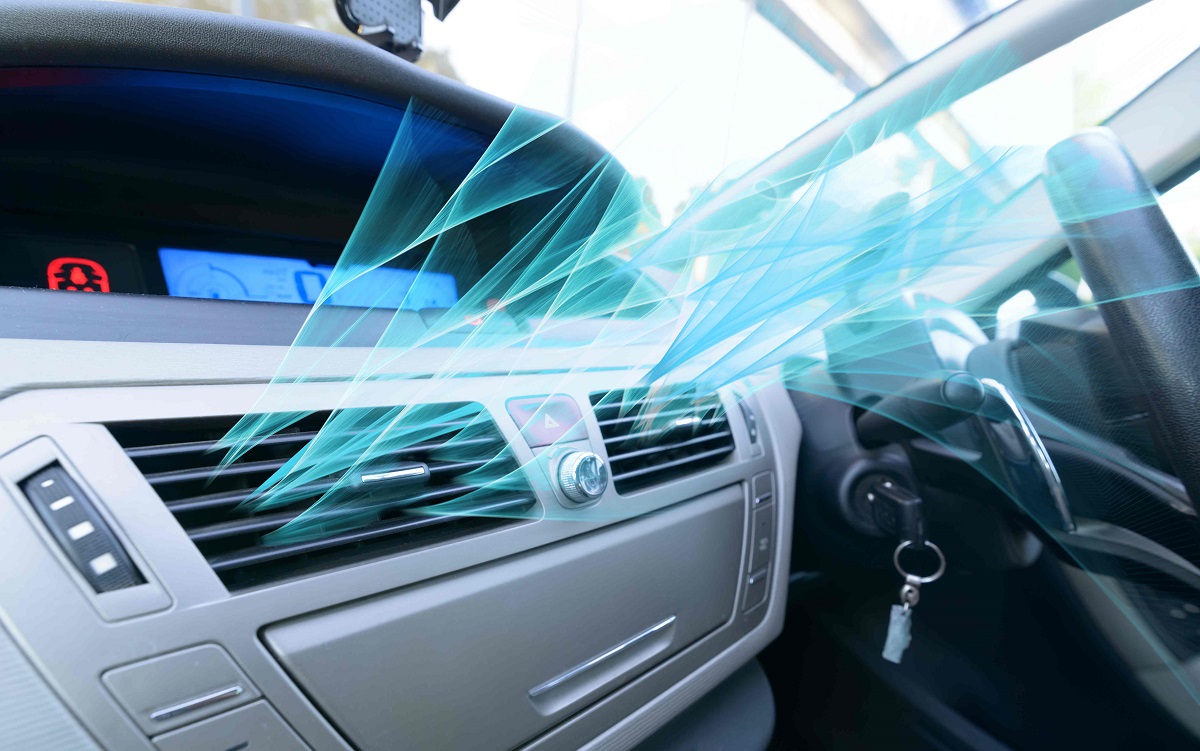

0 thoughts on “Car Overheats When AC Is On And Idle”